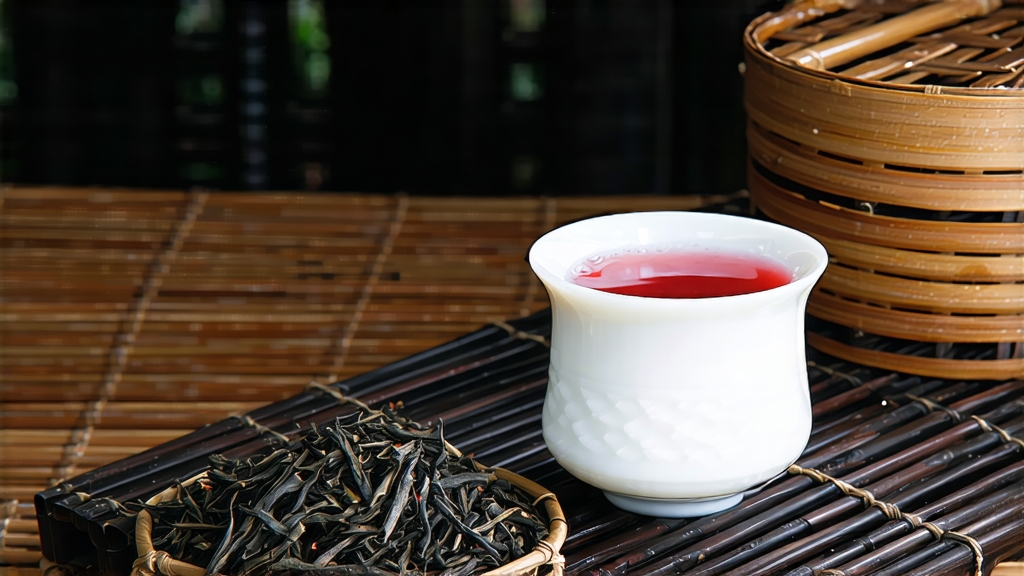
When European tea lovers first encountered the dark, glossy leaves that unfurled into a deep amber liquor with an intoxicating campfire aroma, they were tasting the earliest deliberately crafted black tea on earth—Lapsang Souchong. Originating in the Wuyi Mountains of northern Fujian around the mid-seventeenth century, this tea predates every other black-tea style and, through the smoky version that arrived on Dutch and British ships, introduced the very concept of “black tea” to the West. Today the same microclimate of mist-shrouded gorges, mineral-rich clays, and fluctuating day-night temperatures that nurtured those first bushes continues to shape a family of cultivars collectively marketed as Zheng Shan Xiao Zhong—literally “Original Mountain Small Sort”—of which the pine-smoked classic is only the most famous member.
History: From Ming-Era Mist to London Drawing Rooms
Local legend recounts that a passing army requisitioned Wuyi tea factories during the late Qing dynasty, forcing farmers to dry their half-fermented leaves rapidly over open pinewood fires so that the crop could be rushed to market. Whether myth or expedient invention, the technique created a tea that travelled better than the greener oolong styles then dominating Fujian exports. By 1667 the British East India Company was listing “Bohea Souchong” at auction in London; Samuel Pepys mentions drinking “a cup of tee, a China drink” in 1660, almost certainly the same leaf. The name “Lapsang” derives from the Fuzhou dialect “la” (pine) and “sampan” (the small boats that ferried tea downriver), while “Souchong” refers to the fourth and fifth leaves traditionally picked—larger, tougher material that withstands smoking without turning acrid. Over centuries the tea became a currency of empire: Russian caravans crossed Siberia with it, Boston rebels dumped it into their harbour, and Victorian ladies perfumed their drawing rooms with its evocative scent.
Cultivars and Terroir: Three Faces of One Mountain
Modern connoisseurs recognise three distinct styles, all harvested within the 600–1 200 m core zone of the Wuyi National Nature Reserve:
- Traditional Smoke-Dried Lapsang: crafted from the hardy Wuyi Cai Cha (mixed seedling) bushes that root directly into rocky crevices. The leaves absorb resinous volatiles from Masson pine and local Chinese red pine, producing the signature tarry-sweet perfume.
- Unsmoked Zheng Shan Xiao Zhong: made from the same material but dried with only warm air and charcoal embers; it showcases honeyed longan and mineral notes prized by contemporary Chinese drinkers who prefer purity over nostalgia.
- Wild Arbor Jin Jun Mei: a 2005 innovation using only tiny spring buds of the Wuyi Qunti Zhong (heirloom bush) and absolutely no smoke. Its cocoa-malt sweetness and golden tips command prices higher than many top Burgundy wines.
Processing: Where Fire Meets Flesh
The craft begins the moment two leaves and a bud are plucked between Qingming and Grain Rain. After withering on bamboo racks set inside recessed “qing lou” upper floors—where pinewood embers smoulder 1.5 m below the trays—the leaves lose 60 % moisture and gain a faint resin halo. Rolling follows, 70 minutes of alternating machine pressure and hand kneading that ruptures cells to release catechins and polyphenol oxidase. The crucial 3–4 hour oxidation proceeds in wooden tubs lined with wet cloth; here the leaf turns from jade to copper while enzymatic reactions build theaflavins that will later balance smoke. For smoked versions, the final drying occurs over a 48-hour sequence of pine fires kept at 80–90 °C; masters “read” the plume, adding damp sawdust to create short bursts of cool white smoke that fixes aromatics without scorching. Unsmoked lots are instead baked above charcoal made from local hardwood, rested, then re-baked up to three times—a technique borrowed from Wuyi rock oolongs that deepens maltiness.
Grading & Ageing: A Tea That Travels Through Time
Unlike most black teas, well-made Lapsang Souchong improves for two to three years if stored in breathable kraft tins away from strong odours.